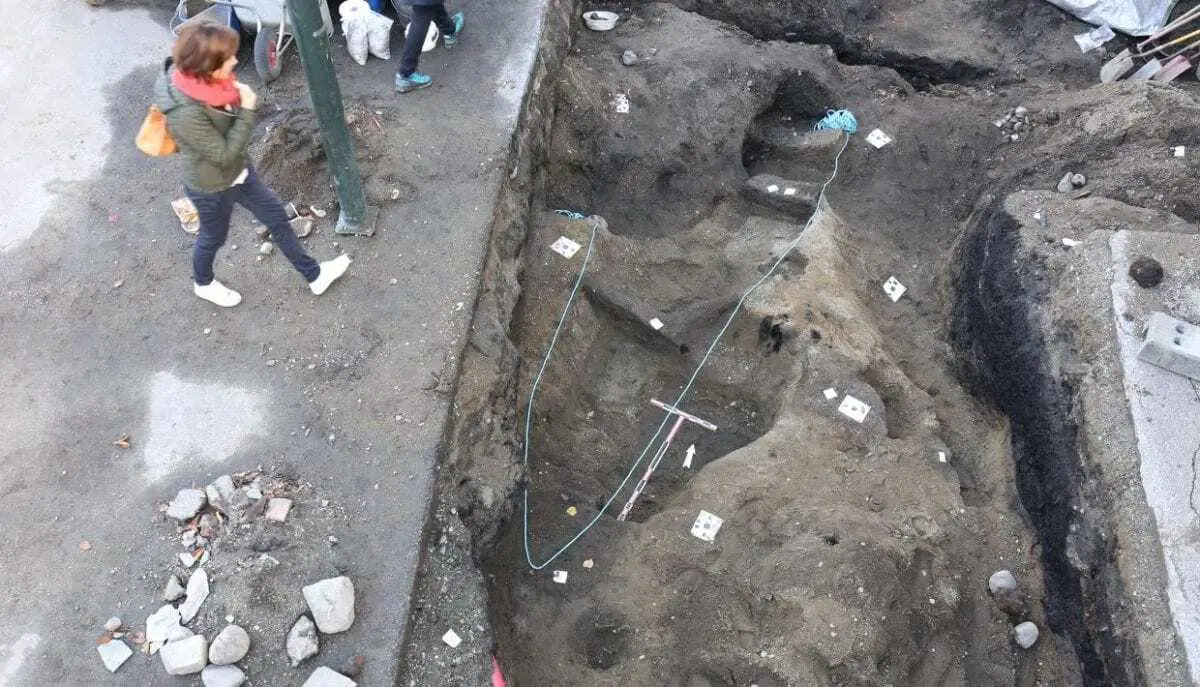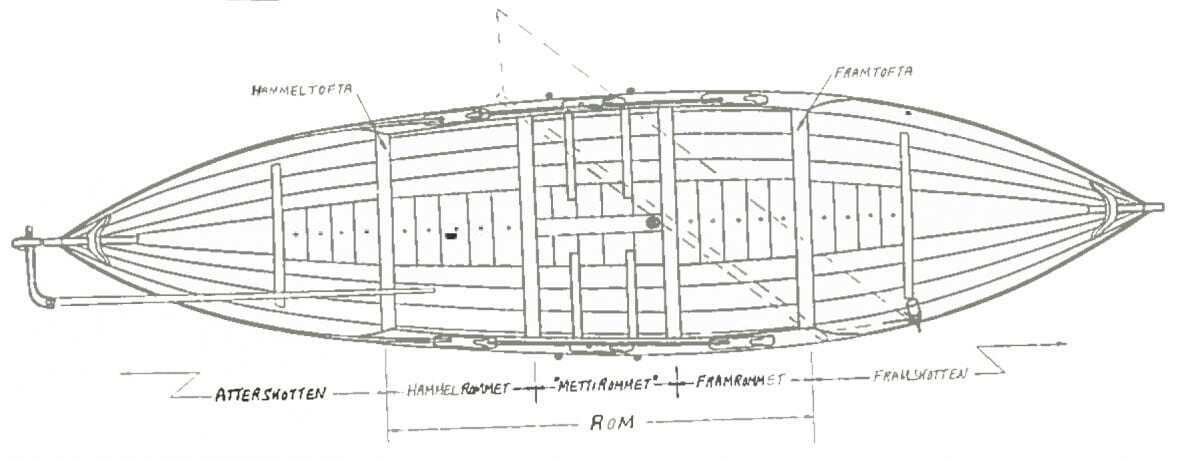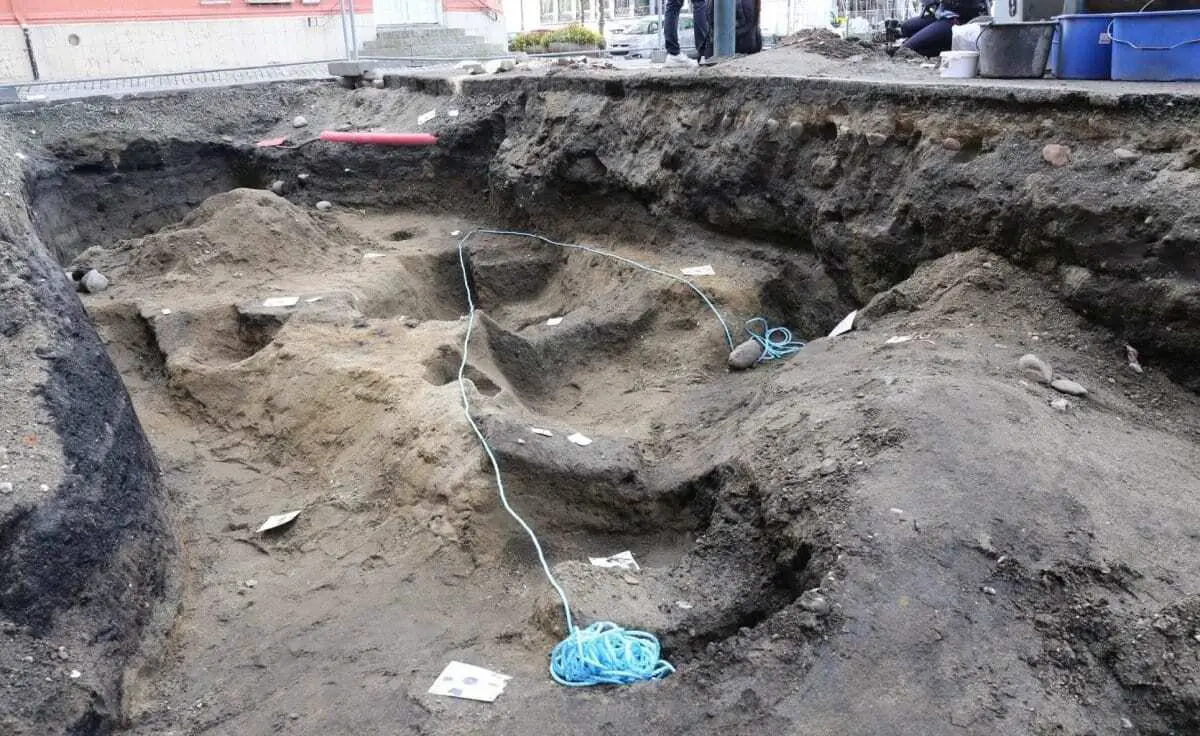Archaeologists have announced the discovery of a possible Viking boat burial in Central Trondheim, Norway
During one of the final days of excavations by the Norwegian Institute for Cultural Heritage Research (NIKU), a boat-shaped feature became prominent, dug into the natural desposits under the main market square.
NIKU archaeologist Ian Reed said that careful excavation works revealed that no wood remained intact, but lumps of rust and some poorly-preserved nails indicated that it was a boat that was buried here.
Initial studies suggest that the remains of the boat was at least 4 meters long and oriented more or less north-south but has been disturbed by later pits and postholes.

Skeletal remains
The boat contained two bones, which, like the boat were oriented north-south. This suggests that a burial was contained within the boat, but because of the poor state of preservation NIKU is carrying out DNA tests to be 100% certain that the bones are human.
Sheet bronze and a key
Other finds include a small piece of sheet bronze found alongside one of the bones, as well as personal items or grave goods.
A posthole dug through the boat’s centre contained a spoon fragment and part of a key for a chest. These date from the 7th to 10th century but due to the context may not be attributed to the boat burial itself.
Could it be an Åfjord boat?
The location from today’s harbor and fjord suggests that the boat grave dates from the late Iron Age, or perhaps the early Viking Age.
Archaeologists believe that the boat was buried in the ground in a similar manner to coffins and a burial mound placed above. Knut Paasche, a specialist in early boats believes that the boat type is similar to an Åfjord boat, which has historically been a common sight along the Trøndelag coast.

The archaeological investigations are financed by the municipality of Trondheim and the Norwegian Directorate for Cultural Heritage.
Norsk institutt for kulturminneforskning – NIKU
Header Image Credit : Niku






